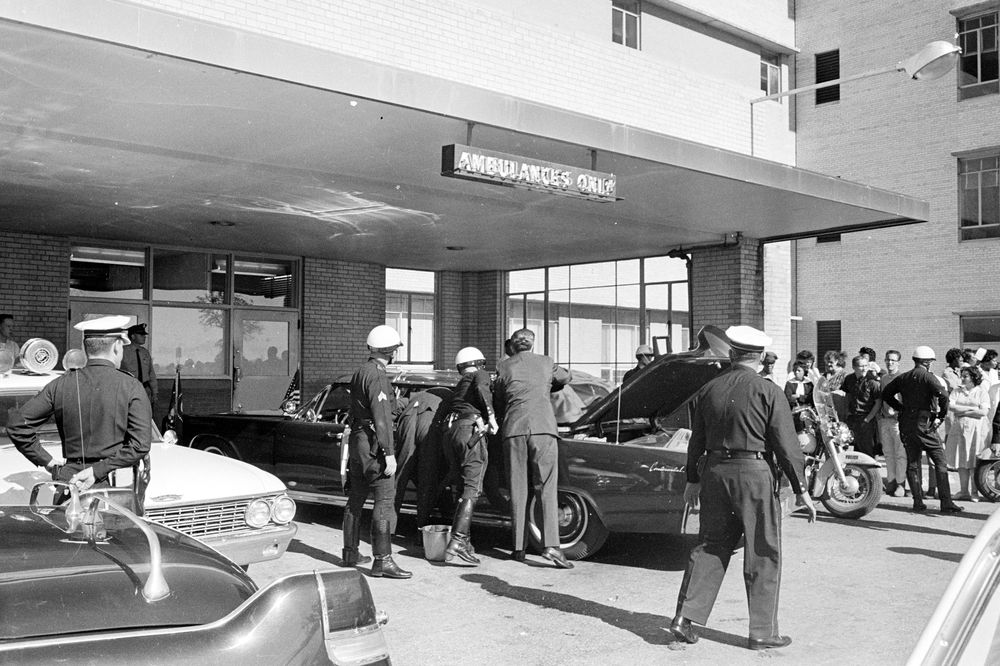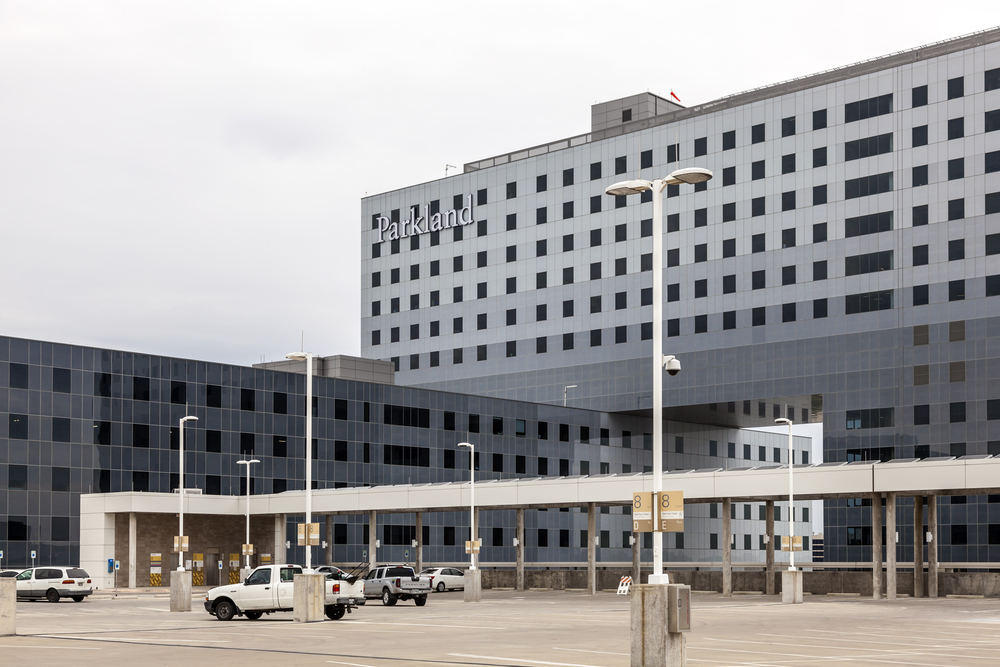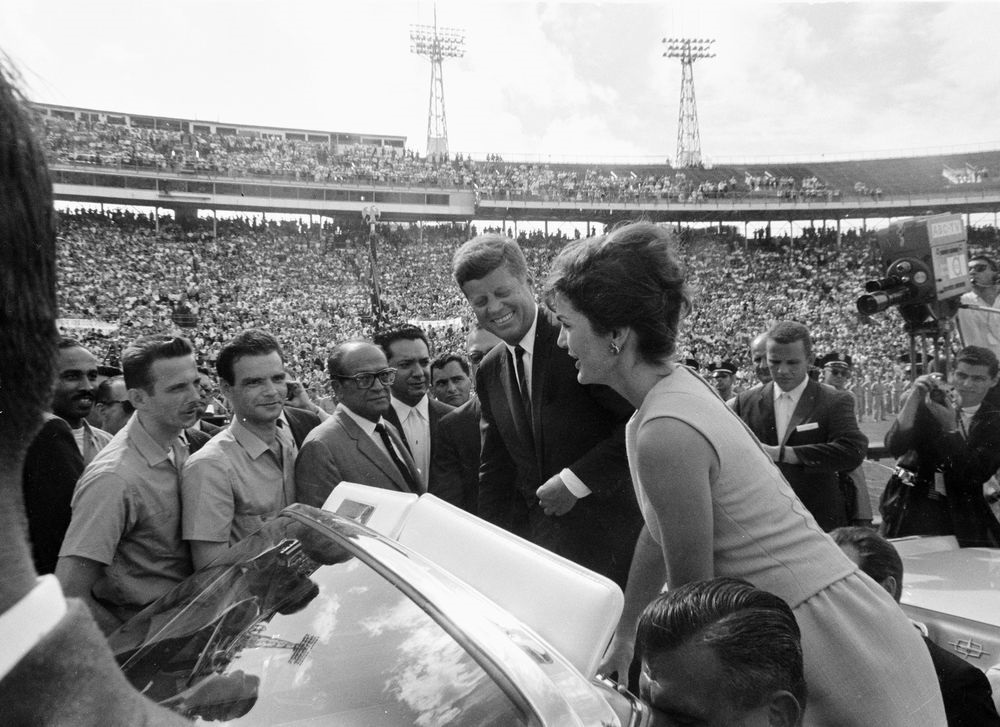These are a few tales from Dallas’s Parkland Hospital, where JFK died
The death of JFK shocked not only our nation, but the entire world was trembling at the thought that nobody is safe anymore if that happened to the president of one of the most important countries in the world.
When President John F. Kennedy was shot and killed on November 22, 1963, everyone in Dallas, Texas, focused on Parkland Memorial Hospital. The entire America held its breath waiting for good news. Good news that never came.
In Trauma Room One, doctors made a final attempt to save the life of a fallen leader. While the world recalls the grassy knoll and the motorcade, Parkland’s halls hold more subdued, frequently untold tales.
Intimate moments, difficult medical procedures to save JFK, and strange coincidences reveal the heart of a national tragedy that’s still alive in our memories. Here are some of the most memorable stories from Parkland Hospital, where JFK died.

The President arrives at the Parkland Hospital, but the hope fades
Around 12:36, President Kennedy’s limousine arrived at Parkland Memorial Hospital. This was exactly eight minutes after he was shot. What makes me shake while I am writing these lines is trying to imagine how hard it was for Jacqueline Kennedy, who stood still, covered in blood, and wouldn’t let her husband go.
In an interview, Clint Hill, the first agent to reach the president, said that “She had a hold of him, and she wouldn’t let go.” They took him to Trauma Room One on a stretcher, where he was bleeding and not responding.
The medical team was very worried right away because of how severe his head wound was. Dr. Malcolm Perry, a young surgeon, started CPR and put in a tracheostomy tube, but the president’s vital signs were already getting worse.
Moment by moment, the hope for Kennedy’s survival faded. No matter how hard the doctors tried, at 1 p.m. sharp, the president was pronounced dead.
While this event symbolized an important phase in American history, it brought in an ominous day that the medical staff at Parkland would never forget, not even in 2025.
Jacqueline Kennedy was loyal before and after
In various videos posted on the internet, Jackie Kennedy is seen stepping onto the back of the convertible right after the fatal headshot. Surprisingly, she was attempting to recover a sizable portion of her husband’s brain and skull. She also managed to gather more tissue fragments from the seat and floor of the limousine.
A traumatized Jackie tried her best to assist Dr. Marion Jenkins, who was fighting in vain to save JFK’s life in Trauma Room One upon arriving at Parkland, by giving him all of the brain and skull material she had been able to salvage.
She did her best to stay until the very last minute. She refused to leave until she was compelled to board Air Force One, and nurses from the Parkland Hospital, where JFK died, declared that it was heartbreaking to see her sitting there silently, covered in blood. The staff who witnessed it would never forget it.
Why Parkland Hospital staff knew JFK couldn’t be saved
Anyone who saw the president’s condition upon entering Parkland could tell he was either already deceased or inoperable. It was obvious to a doctor or even a nurse that JFK was no longer there because of his open head wound and still posture.
Nevertheless, this was the US president, and he had his wife with him. Therefore, the Parkland surgeons planned to treat JFK as though he could be saved and hoped for a miracle.
Dr. Charles Baxter was performing closed-chest cardiac compressions, among other emergency procedures, to try to get the heartbeat back to something approaching normal.
Joe Goldstrich claims that when Clark noticed what Baxter was doing, he reacted fast, saying, “My God, Charlie, what are you doing? There is blood everywhere.” This was a conversation that had occurred in the presence of Jacqueline Kennedy who may already knew they won’t be able to save him but deep down she was hoping for the best.
Tracheotomy damaged the evidence
It was then, as it is now, common practice to insert an endotracheal tube for patients in critical conditions to facilitate breathing or administer particular medicines. Given that the initial bullet had gone straight through Kennedy’s neck, it was readily apparent that he required that tube.
A young medical student at Parkland Hospital, Joe Goldstrich, insisted that Kennedy’s neck wound could accommodate the tube. However, his senior physicians disagreed, and a cut was made over the wound on his neck.
Unfortunately, a lot of people believe that this was a needless action because it destroyed the evidence. By doing this, the neck wound’s original shape was damaged, making it impossible for autopsy technicians to distinguish between an entrance wound and an exit wound.

Prank calls at Parkland Hospital
Among the tales from Dallas’s Parkland Hospital, where JFK died, there is this one about prank calls that I still don’t understand how some humans can be.
Initially, the shooting sparked well-wishers nationwide, with some even speculating that the president might have been hit in the head. Regretfully, it also attracted people with bad intentions.
Historian William Manchester claims that while the president was being rapidly resuscitated in the operating room by surgeons, another event was taking place in the operator’s room. Incoming calls lit up the telephone switchboard there.
In Toledo, a woman who called herself “The Underground” claimed to possess occult abilities that would enable her to keep Kennedy alive. Some people called to curse and disparage the doctors and nurses, but the most unsettling call came from a child posing as JFK’s son. When he realized he was being caught, he laughed and hung up.
The situation was extremely difficult, so can you imagine being called by various people who only wanted to make fun or, worse, pretend they’re someone else?
“This Is MY Body…”
JFK’s security detail placed the president’s body in a coffin and started carrying it down the hall after the official announcement of his death. They immediately ran into Dallas County Coroner Earl Rose and other local officials there. The result was one of the most foolish “federal vs. local authority” standoffs ever.
He dared to insist that an autopsy be performed following local law before the president could depart the state, shouting, “This is my body!”
In actuality, he was taking advantage of the situation big time because at that time there was no law declaring that killing the US president was a federal offense (Congress corrected this in late 1963 as a result of this event). How about the fact that JFK was shot in front of thousands of people who were basically eyewitnesses? I am getting angrier by simply writing these things.
Bottom line:
I was born in 1966, three years after the tragic incident with JFK, but I grew up in a house where both of my parents were huge fans of him, and I still remember them saying, “Our country will be lost without him! He was a great president for America!” Driven by a passion for history and knowledge since elementary school, I slowly began to document my understanding of what happened at the Parkland Hospital where JFK passed away.
Out of all the books I’ve read about the topic, the one that is still stuck with me is The Death of a President: November 20-November 25, 1963, which came out in 2013, and I remember it was a huge deal. At the Kennedy family’s request, William Manchester set out to put together an in-depth, reliable chronicle of the events leading up to and following the death of President John F. Kennedy.
If you’re curious to read real facts about what happened according to everybody who was around him, including his wife Jacqueline, this book may be worth your time. I still have my copy, but it’s available on Amazon for $18.79.
